6 Horror Movies Based On Even Scarier Books
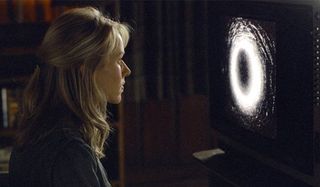
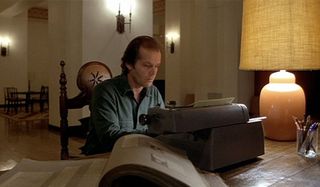
Many of the best horror movies of all-time have been based on books and often those novels are even scarier than the movies they inspired. The difference in the mediums makes a huge difference in the level of terror inherent. What makes a scary book great is that the reader’s imagination is often far scarier than anything a director can present in a movie.
It’s not all about Stephen King either. Even though King is the king of the novel-turned-horror movie, including the recent versions of IT and Pet Semetary, there are plenty of other terrifying books by other great authors that are worth checking out. Honestly, they are all terrific films, but as is so often the case, the books are even scarier.
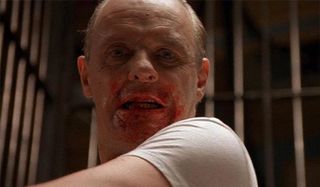
Silence Of The Lambs (1991)
Thomas Harris’ third book The Silence Of The Lambs, released in 1988, came seven years after his first book about the serial killer Hannibal Lecter, Red Dragon. Both books are completely terrifying, especially Silence Of The Lambs. The movie, of course, was a huge hit and was only the third (and most recent) film to win all five of the “Big 5” Academy Awards.
Director Jonathon Demme’s adaptation is faithful to the novel, with the Lecter character, played by Anthony Hopkins in one of the Academy Award-winning performances, being just as scary as he is in the book. What is lost though, is an uneasy sense of dread that readers of the novel find throughout the book in regards to Lecter’s intentions.
The scariest books are the ones that ask open questions and leave them lingering and Thomas Harris does this wonderfully in the book. The movie almost makes an anti-hero out of Lecter, and audiences may almost forget how evil the character is. There is no question that Anthony Hopkins' brilliant performance as the horrifying, yet weirdly charming psychopath is a major reason why audiences get to that point, but it also makes the lingering fear far less palpable than it is throughout the novel.

The Exorcist (1973)
The Exorcist is, without question, one of the most terrifying movies ever made. Even almost 50 years after its release, the movie still manages to thrill and scare audiences today. The novel on which it is based, like the others on this list, allows the reader to use his or her imagination so much that is it almost certain to keep that reader awake at night, thinking about the book and fearing the Satanic demons that haunt it.
William Peter Blatty’s novel of the same name, released two years before the movie, was inspired by the supposed exorcism of a real-life teenage boy from Maryland that took place in St. Louis in 1949. By combining religion with suspense and horror, Blatty conceived the kind of story that terrifies everyone who reads it.
CINEMABLEND NEWSLETTER
Your Daily Blend of Entertainment News
William Peter Blatty also wrote the screenplay for the 1973 movie, starring Max Van Sydow as the priest brought in to perform the exorcism, so it follows the book closely, as you would expect. Like the other movies on this list, the book allows for the readers own minds to conjure up the most terrifying moments of the story. The book leaves readers questioning everything they have known about Christianity, God, and the Devil and, frankly should leave them at least a little petrified of all three.
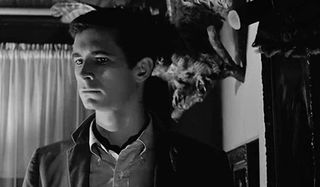
Psycho (1960)
After Robert Bloch wrote Psycho in 1959, one of the reasons Alfred Hitchcock chose the novel for his next film in 1960 was Bloch’s use of a “false protagonist.” In the novel, Bloch repeatedly introduces characters who seem to be main characters, only to quickly kill them off.
Alfred Hitchcock takes this one step further, beginning the film by immediately following star Janet Leigh’s character Marion as she steals money from her boss and attempts to make a break for it, only to be murdered in the famous shower scene at The Bates Motel. This happens not even halfway through the movie.
The influence of that technique of tricking the audience into believing a character is the protagonist of the story only to have them killed off suddenly has been used many times in books and movies since, including in Scream in 1996 and, of course, more recently in Season 1 of Game Of Thrones with the death of Ned Stark.
The movie Psycho is mostly faithful to the book, though a lot of the details of Norman Bates, the troubled killer in both, are changed. In the book, he is immediately scummier and more obviously scary than in the movie. In the novel, Bates is also a slovenly drunk who immediately makes readers wary of him, whereas in the movie, he is presented as somewhat clean cut and normal before being revealed as the killer. This changes the nature of the terror in the book. It works very effectively, scaring readers with his potential and allowing imaginations to run wild, as a book should do.
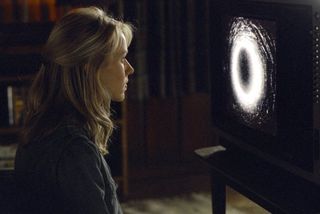
The Ring (2002)
When The Ring, starring Naomi Watts, was released in 2002, it set a new standard in horror. It was a different kind of horror film than most of what had been released in the genre for decades, which had been mostly slasher flicks. The Ring is totally and completely psychologically terrifying, so it’s no surprise to learn it’s based on a book.
The book, originally written in Japanese by author Koji Suzuki and first published in 1991, was a huge hit in Japan and spawned not only the American film series, but Japanese and Korean versions as well. The American version of The Ring actually remade the Japanese movie, not the book, so quite a bit is different; in fact, it’s like a copy of a copy.
Some of the changes are quite big, like changing the protagonist from male to female in the American movie and there is far more foreshadowing in the movie after Naomi Watts’ character views the cursed tape. Regardless, at their hearts, the fear factor is the same. Watts is in a race against time to discover how viewing the cursed tape leads to certain death is the same as the book and the terror relies less on gore and more on the psychological effects of the tape, just like the book. The movie completely matches the book in its intensity.
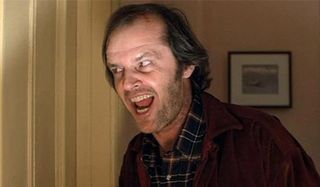
The Shining (1980)
We couldn’t go the whole list with an entry from the king, Stephen King. While there were any number of movies we could have picked, The Shining seemed like the obvious choice, not only because both the book and the movie are really scary, but they are also great examples of just how different a movie can be when compared to its source material.
Stephen King famously hates Stanley Kubrick’s film version of The Shining and has been quite outspoken about it over the years, but almost everyone else agrees that Kubrick’s film is a masterpiece, as is King’s book. Yet, there are a lot of differences, most importantly, the motivations of the main character, Jack Torrance.
In the novel, Jack is haunted by the ghosts within the hotel he and his family are caretaking for the winter, high in the remote mountains of Colorado, while in the movie, the demons that Jack fights are internal as well as external. Instead of the ghosts driving him insane, as in the book, the film version is already insane and the hauntings push him over the edge. The book helped solidify Stephen King as the premiere horror novelist of his generation and is now on the Mt. Rushmore of scary storytellers partially because of this book.
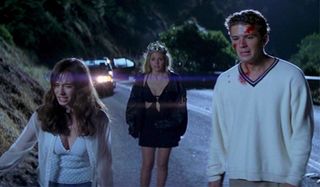
I Know What You Did Last Summer (1997)
Many people are shocked to learn that 1997’s I Know What You Did Last Summer, the campy slasher film featuring a ‘90s-era “brat pack” including Sarah Michelle Gellar, Jennifer Love Hewitt, Freddie Prinze Jr., and Ryan Phillippe was based on a 25-year-old novel. Well, it’s loosely based on the novel anyway, the creators of the movie took quite a bit of liberties and unlike Kubrick in The Shining, these changes weren’t for the better.
The novel, by Lois Duncan and first published in 1973, tells the same basic story. Four teenagers are involved in a hit and run and kill a man. That’s pretty much where the similarities end. In the book, instead of a fisherman, the teens strike and kill a biker. The major difference, though, is the movie is basically a slasher flick and the book is most definitely not. In the movie, the four teens are haunted by the fisherman, who did not die in the accident, and who stalks and attacks them with his hook for a hand.
The movie follows many classic slasher film tropes and relies on lots of jump scares and gory images. The book, on the other hand, is completely different as the four teens did actually kill the biker they struck, but they are stalked secretly (and effectively) by the brother of the man they killed, who puts in motion a complicated plan to get revenge for what the teens did to his brother. The terror and suspense in the book comes from the mystery of who is stalking them, not the gore, and it’s much scarier for it.
The honorable mention of this list is World War Z, which sort of falls in a difference category, being that it is a zombie story, but it’s definitely worth mentioning since it has many scary moments. The movie, which took years to finally get made after fans of the popular novel clambered for it. When the movie, starring Brad Pitt, was finally made in 2013, it was nowhere near as scary as the book.
World War Z is proof the source material doesn’t always mean a book can be turned into a great movie and that usually a person’s imagination is what makes stories the scariest. Nothing does more to stir the imagination than well written ghost story and these books prove it!
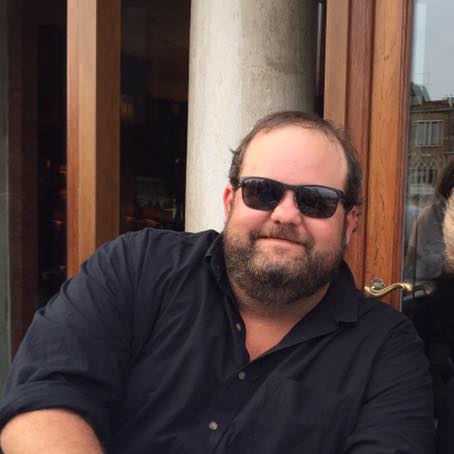
Hugh Scott is the Syndication Editor for CinemaBlend. Before CinemaBlend, he was the managing editor for Suggest.com and Gossipcop.com, covering celebrity news and debunking false gossip. He has been in the publishing industry for almost two decades, covering pop culture – movies and TV shows, especially – with a keen interest and love for Gen X culture, the older influences on it, and what it has since inspired. He graduated from Boston University with a degree in Political Science but cured himself of the desire to be a politician almost immediately after graduation.
Most Popular






